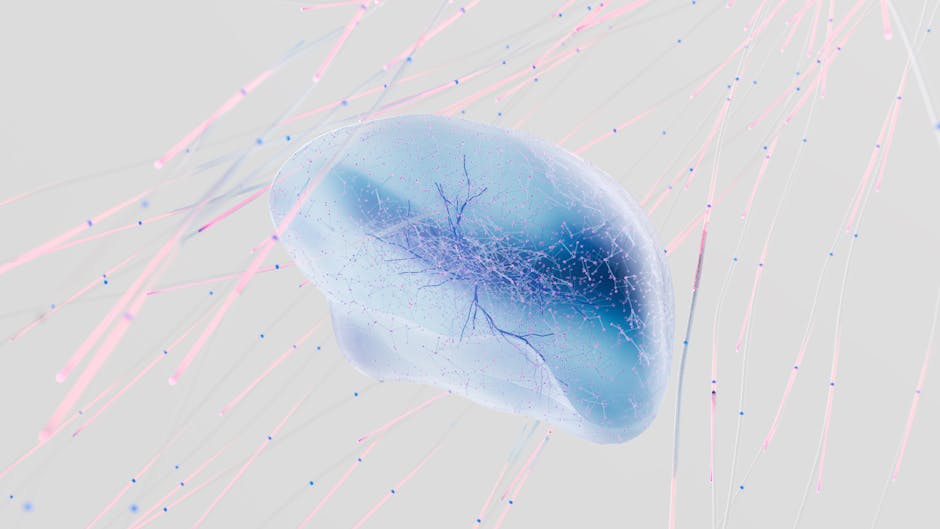Discreet Drug Shipping: Top 5 Secure Methods 2025
Discreet drug shipping offers a private and secure way to receive medications, maximizing your privacy at every step. With rising awareness around sensitive needs like mental health, many are turning to discreet shipping options for their privacy and convenience. Here’s how it works:
- Privacy Protection: Packages use plain, unmarked boxes to keep your shipment confidential.
- Secure Delivery: Measures ensure you are the only one receiving your package without neighbors knowing the contents.
- Convenient Process: Avoids needing extra signatures or visits, ensuring a straightforward delivery.
For anyone dealing with treatment-resistant conditions, finding a quick and private way to obtain potential treatments is a priority. Whether you’re in the USA, UK, Germany, or Austria, discreet medication delivery is becoming a preferred option. It respects privacy, ensures security, and facilitates a seamless experience from purchase to doorstep delivery.
This trend not only helps maintain patient confidentiality, a crucial aspect of medical ethics, but also addresses the logistical challenges involved with transporting sensitive items. From tamper-evident packaging to strategic partnerships with logistics providers, every detail is covered to prevent any unwanted attention.

Basic discreet drug shipping terms:
- buy ketamine hydrochloride injection online without prescription
- buy ketamine legally
- ketamine home delivery
Understanding Discreet Drug Shipping
Discreet drug shipping is all about ensuring your privacy and security when receiving sensitive medications. Let’s break down how this process works and why it matters.
Discreet Packaging
The first line of defense in discreet drug shipping is the packaging. Companies use plain, unmarked boxes to keep the contents hidden. This means no logos or labels that might hint at what’s inside. By using generic return addresses and third-party logistics providers as senders, the package blends in with everyday mail. This approach minimizes the risk of drawing attention from prying eyes.

Privacy Protection
Privacy protection is paramount. The entire process is designed to comply with regulations like HIPAA, ensuring that your personal health information stays confidential. Before shipping, pharmacies verify the recipient’s identity and get written consent, adding an extra layer of security. This step ensures that your package is only delivered to you, safeguarding your privacy.
Handling Sensitive Shipments
Sensitive shipments require special attention. Discreet drug shipping companies often partner with reputable pharmacies and logistics providers to ensure that medications are handled with care. This includes using temperature-controlled packaging for drugs sensitive to extreme temperatures and tamper-evident seals to detect any unauthorized access.

Why It Matters
For those managing conditions that might carry stigma, like mental health issues, discreet drug shipping offers a solution. It provides a way to receive necessary treatments without fear of judgment or privacy invasion. This method is not just about convenience; it’s about respecting your right to confidentiality and making sure your medical needs are met without unnecessary exposure.
In conclusion, discreet drug shipping is a comprehensive approach that prioritizes privacy and security. From packaging to delivery, every step is designed to protect your sensitive shipments and provide peace of mind.
Legal Considerations
When it comes to discreet drug shipping, understanding the legal landscape is crucial. Let’s explore the key legal aspects you should be aware of.
International Shipping
Shipping medications across borders involves navigating complex regulations. Each country has its own set of rules regarding the import and export of drugs. It’s important to comply with these regulations to avoid any legal issues. For example, some countries require specific documentation or permits for certain medications. Working with experienced logistics providers can help ensure compliance with international shipping laws.
Customs Declaration
Customs declarations are a critical part of the shipping process. When medications are shipped internationally, they must be accurately declared to customs authorities. This includes providing detailed information about the contents, value, and purpose of the shipment. Failure to declare medications properly can lead to delays, fines, or even confiscation of the package. Using generic labels and plain packaging can help maintain privacy while still meeting customs requirements.
Prescription Drugs Legality
Under federal law in the United States, it is illegal to mail prescription drugs unless you are an eligible entity approved by the DEA. This means individuals cannot send prescription medications through the mail without proper authorization. Violating this law can result in criminal charges. However, registered pharmacies and other approved entities can legally ship prescription drugs, provided they follow all applicable regulations.
In some cases, people may unknowingly receive drugs in the mail. For example, a Florida couple once received 65 pounds of marijuana by mistake. They reported it to the police and were not charged, highlighting the importance of transparency and reporting unexpected deliveries.
In conclusion, navigating the legal considerations of discreet drug shipping requires careful attention to international shipping rules, customs declarations, and the legality of mailing prescription drugs. Understanding these elements ensures a smooth and compliant shipping process.
Methods of Discreet Shipping
When it comes to discreet drug shipping, the methods used are crucial for maintaining privacy and security. Here are some of the most effective techniques:
Plain Packaging
Plain packaging is a key element in discreet shipping. Packages are typically unmarked and neutral in appearance. This means no logos, brand names, or any indicators of the content inside. For instance, a discreetly shipped package might be a simple brown or white box, blending seamlessly with other mail. This helps prevent theft and maintains the recipient’s privacy.
Generic Labels
Another important aspect is the use of generic labels. These labels only include essential information like the recipient’s address and a return address. They avoid listing the sender’s name or any details that could hint at the package’s contents. This approach ensures that the package’s purpose remains confidential, even if someone else sees it.
PO Box Delivery
For those seeking an extra layer of privacy, PO Box delivery is an excellent option. By using a PO Box, the package is delivered to a secure location rather than a home address. This method is especially useful for sensitive shipments, as it minimizes the chance of unintended parties intercepting the package. Many carriers, including USPS, offer this service to improve privacy.
These methods—plain packaging, generic labels, and PO Box delivery—work together to ensure that discreet drug shipping is both secure and private. Each technique plays a vital role in protecting the recipient’s confidentiality and ensuring the safe delivery of sensitive items.
Carriers Offering Discreet Shipping
When it comes to discreet drug shipping, choosing the right carrier is essential. Each carrier has its own approach to ensuring privacy and security during delivery. Let’s explore some of the major players in the field:
USPS
The United States Postal Service (USPS) is a popular choice for discreet shipping. They offer services like generic packaging and PO Box deliveries, which help maintain privacy. USPS is known for being vigilant about protecting customer confidentiality. Their plain packages blend in with regular mail, making them a reliable option for sensitive shipments.
FedEx
FedEx provides discreet shipping by using non-descriptive boxes and requiring signatures upon delivery. This ensures that the package reaches the intended recipient securely. However, it’s important to note that FedEx does not deliver to PO Boxes, which may limit some privacy options. Despite this, their commitment to confidentiality makes them a trusted carrier for discreet deliveries.
UPS
UPS offers similar discreet shipping services as FedEx, including plain packaging and the option for package pickup at UPS locations. This allows customers to maintain privacy by collecting their packages at a secure site. Like FedEx, UPS does not deliver to PO Boxes, but their focus on confidentiality makes them a solid choice for secure deliveries.
Amazon
Amazon is renowned for its dedication to customer privacy. They use plain packaging for all orders, ensuring that no identifying marks or descriptions appear on the package. This approach keeps the contents hidden until the package is opened. With a wide reach and consistent service, Amazon is a leader in discreet shipping.
These carriers—USPS, FedEx, UPS, and Amazon—each offer unique services to support discreet drug shipping. By choosing the right carrier, you can ensure that your delivery remains private and secure.
Frequently Asked Questions about Discreet Drug Shipping
Is discreet shipping legal?
Yes, discreet shipping is legal, but there are important considerations to keep in mind. When shipping medications internationally, it’s crucial to comply with customs requirements. This means accurately declaring the contents of the package and ensuring that the shipment adheres to the legal regulations of the destination country. Prescription drugs, for example, must be shipped in compliance with both the sender’s and recipient’s local laws. Failing to follow these guidelines can result in legal issues or the seizure of the shipment.
What is the most discreet shipping method?
The most discreet shipping method typically involves using plain packaging and generic labels. Plain packaging means the exterior of the package does not indicate the contents, protecting privacy. Generic labels further conceal the nature of the shipment by avoiding specific product names or descriptions. These methods ensure that the package blends in with ordinary mail, reducing the likelihood of attracting attention. Many carriers, such as USPS, FedEx, and UPS, offer services that use these strategies to maintain discretion.
Does USPS offer discreet shipping?
Yes, USPS offers discreet shipping services designed to protect customer privacy. They provide plain packaging and the option to deliver to PO Boxes, which adds an extra layer of confidentiality. PO Box delivery allows recipients to collect their packages without the risk of them being left unattended at their home address. USPS’s commitment to using non-descriptive packaging and their extensive reach make them a trusted option for those seeking discreet delivery solutions.
Conclusion
At Buy Ketamine Crystals Online, we understand that privacy is a top priority for our customers. That’s why we’ve made discreet drug shipping a cornerstone of our service. Our commitment to secure delivery ensures that your ketamine products arrive safely and privately, no matter your location.
Using plain packaging and generic labels, we protect your privacy from the moment your order leaves our facility. This approach not only preserves discretion but also safeguards your shipment against unwanted attention during transit. Our delivery methods are designed to blend seamlessly with ordinary mail, providing you peace of mind.
For those concerned about the legalities of discreet shipping, rest assured that we adhere to all necessary regulations. We ensure that all shipments comply with the legal requirements of both the sending and receiving countries, minimizing the risk of any complications.
Whether you’re in the USA, UK, Germany, or beyond, our reliable shipping network, including trusted carriers like USPS, guarantees that your order is handled with care and confidentiality.
Explore our wide range of ketamine products here and experience the convenience and security of discreet delivery with Buy Ketamine Crystals Online. Your privacy is our promise.






























